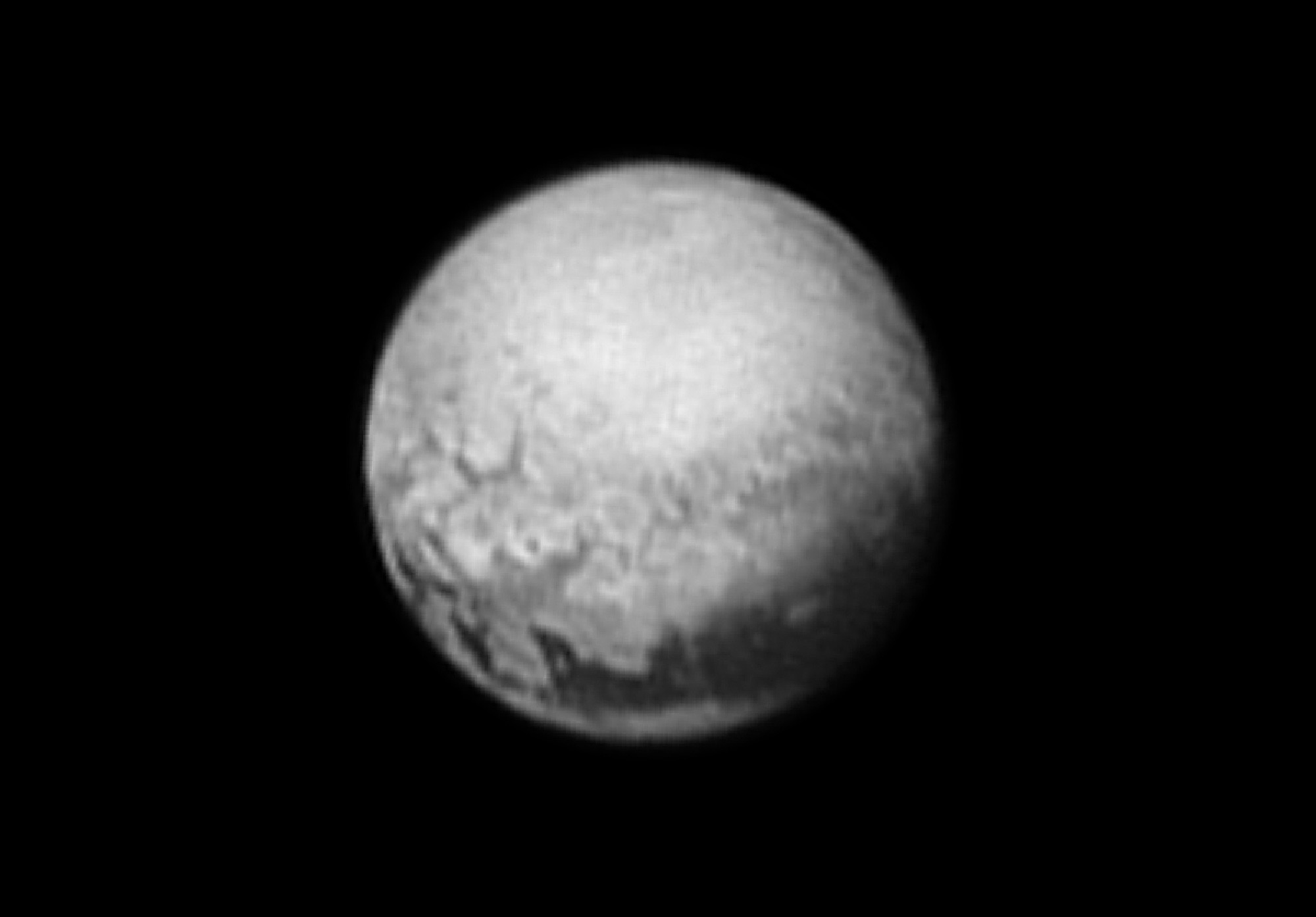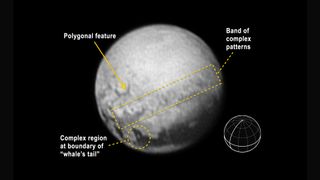
Pluto's frigid surface abounds with mysterious and complex features, the latest photo by NASA's approaching New Horizons spacecraft shows.
The image, which New Horizons took Thursday (July 9) from a distance of 3.3 million miles (5.4 million kilometers), reveals apparently polygonal features and a 1,000-mile-long (1,600 km) band of patterned, dark-and-light terrain, mission team members said.
The new photo also shows an 1,860-mile-long (3,000 km) dark feature dubbed "the whale" in new detail, highlighting an intriguing gray region just above the cetacean's tail. (Pluto's huge heart-shaped feature, which lies near the whale's head, had rotated out of view when New Horizons captured the image.) [See the latest Pluto photos by New Horizons]
"It’s a unique transition region with a lot of dynamic processes interacting, which makes it of particular scientific interest," New Horizons program scientist Curt Niebur, who's based at NASA Headquarters in Washington, said in a statement.
The new image boasts a resolution of 17 miles (27 km) per pixel, mission team members said.

The $723 million New Horizons mission launched in January 2006 and is now just a few days away from performing the first-ever flyby of Pluto. On Tuesday morning (July 14), the spacecraft will zoom within 7,800 miles (12,500 km) of the dwarf planet, gathering data with seven different science instruments.
The probe's observations should help researchers better understand how the Pluto system — which also includes the big moon Charon and four tiny satellites named Nix, Hydra, Kerberos and Styx — formed and evolved.
Get the Space.com Newsletter
Breaking space news, the latest updates on rocket launches, skywatching events and more!
"After nine and a half years in flight, Pluto is well worth the wait," New Horizons principal investigator Alan Stern, of the Southwest Research Institute in Boulder, Colorado, said in the same statement.
As of Saturday (July 11), the piano-size New Horizons probe was 2.96 billion miles (4.76 billion km) from Earth and was rocketing along at 30,870 mph (49,680 km/h) relative to Pluto.
Follow Mike Wall on Twitter @michaeldwall and Google+. Follow us @Spacedotcom, Facebook or Google+. Originally published on Space.com.
Join our Space Forums to keep talking space on the latest missions, night sky and more! And if you have a news tip, correction or comment, let us know at: community@space.com.

Michael Wall is a Senior Space Writer with Space.com and joined the team in 2010. He primarily covers exoplanets, spaceflight and military space, but has been known to dabble in the space art beat. His book about the search for alien life, "Out There," was published on Nov. 13, 2018. Before becoming a science writer, Michael worked as a herpetologist and wildlife biologist. He has a Ph.D. in evolutionary biology from the University of Sydney, Australia, a bachelor's degree from the University of Arizona, and a graduate certificate in science writing from the University of California, Santa Cruz. To find out what his latest project is, you can follow Michael on Twitter.